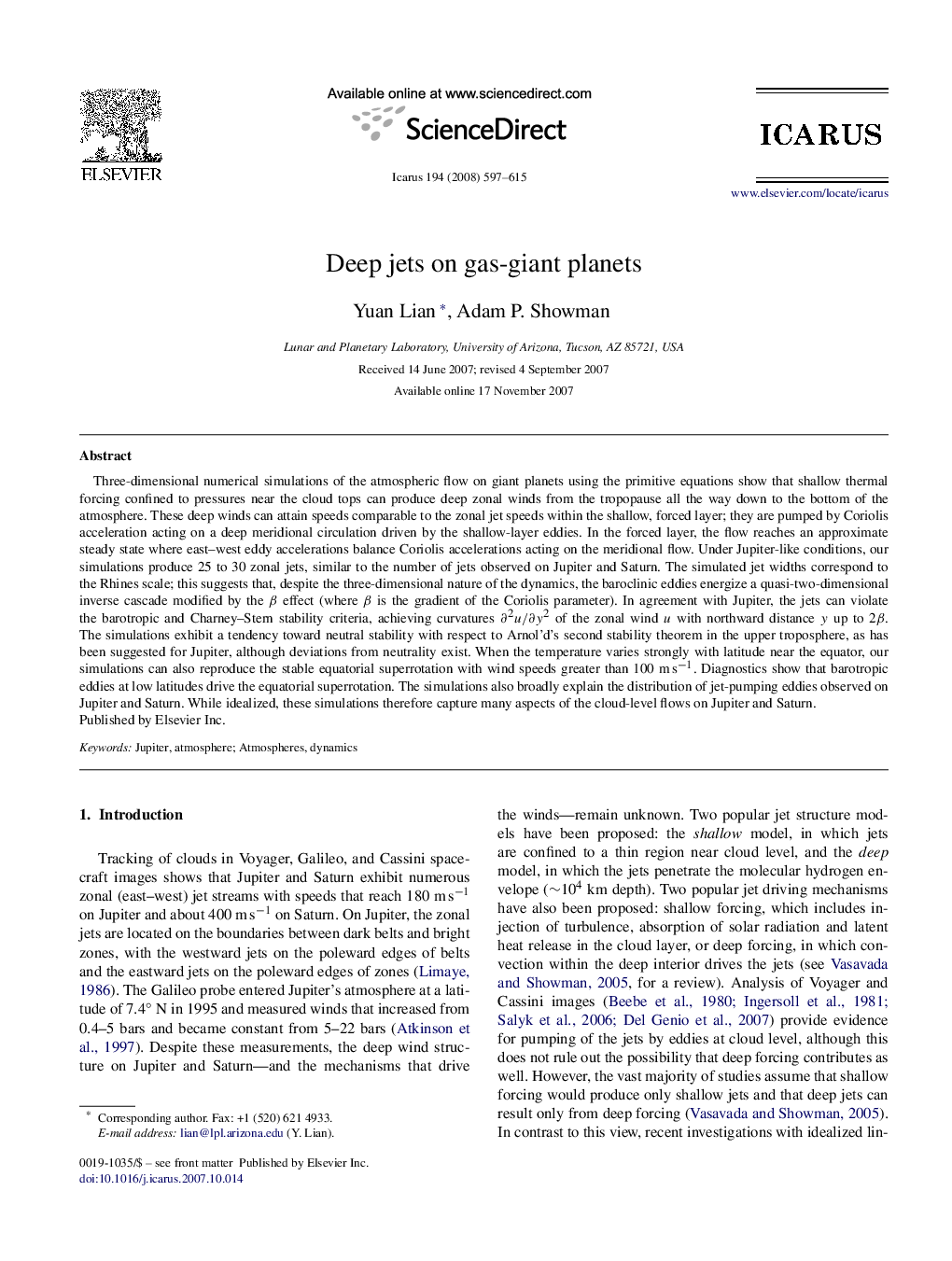| Article ID | Journal | Published Year | Pages | File Type |
|---|---|---|---|---|
| 1775169 | Icarus | 2008 | 19 Pages |
Three-dimensional numerical simulations of the atmospheric flow on giant planets using the primitive equations show that shallow thermal forcing confined to pressures near the cloud tops can produce deep zonal winds from the tropopause all the way down to the bottom of the atmosphere. These deep winds can attain speeds comparable to the zonal jet speeds within the shallow, forced layer; they are pumped by Coriolis acceleration acting on a deep meridional circulation driven by the shallow-layer eddies. In the forced layer, the flow reaches an approximate steady state where east–west eddy accelerations balance Coriolis accelerations acting on the meridional flow. Under Jupiter-like conditions, our simulations produce 25 to 30 zonal jets, similar to the number of jets observed on Jupiter and Saturn. The simulated jet widths correspond to the Rhines scale; this suggests that, despite the three-dimensional nature of the dynamics, the baroclinic eddies energize a quasi-two-dimensional inverse cascade modified by the β effect (where β is the gradient of the Coriolis parameter). In agreement with Jupiter, the jets can violate the barotropic and Charney–Stern stability criteria, achieving curvatures ∂2u/∂y2∂2u/∂y2 of the zonal wind u with northward distance y up to 2β . The simulations exhibit a tendency toward neutral stability with respect to Arnol'd's second stability theorem in the upper troposphere, as has been suggested for Jupiter, although deviations from neutrality exist. When the temperature varies strongly with latitude near the equator, our simulations can also reproduce the stable equatorial superrotation with wind speeds greater than 100ms−1. Diagnostics show that barotropic eddies at low latitudes drive the equatorial superrotation. The simulations also broadly explain the distribution of jet-pumping eddies observed on Jupiter and Saturn. While idealized, these simulations therefore capture many aspects of the cloud-level flows on Jupiter and Saturn.
